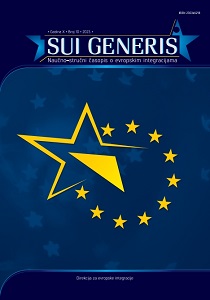L'effet utile елемената тумачења права индукованих из Члана 267 Уговора о функционисању Европске уније
L’effet utile of the elements of the interpretation of law induced from Article 267 of the Treaty on the functioning of the European Union
Author(s): Radmila Dragišić, Boris TučićSubject(s): Constitutional Law, EU-Legislation, Court case
Published by: Direkcija za evropske integracije Vijeća ministara Bosne i Hercegovine
Keywords: European Union; preliminary ruling procedure; case law; interpretation of law; l’effet utile;
Summary/Abstract: The motive for the introduction of the preliminary ruling is found in the need to review the legal validity of the EU legislation and the need to interpret that legislation, whereby the Court of Justice of the European Union dominantly shaped the legal order of the European Union through this procedure. National courts do not have the interpretative power to assess the legal validity of EU legislation. If it were the case, it would lead to unimaginable disharmony reflected in non-uniform application of legislation and fragmentation of the Union’s legal order. This paper, with the use of the conceptual-categorical apparatus of the EU law and having reviewed the constitutional source of the preliminary ruling procedure and the selected case law, explores useful effects of the elements of the interpretation of the EU law induced by the Court of Justice, using the provisions on judicial cooperation from Article 267 of the TFEU. Although it does not have the jurisdiction to apply the EU law to cases of a national (internal) character and therefore assess the validity of national law provisions, it will become apparent that the Court of Justice, through the interpretation of the EU law, provides the national court with useful elements for assessing the validity of national provisions, whereby the exhaustiveness of these elements depends on whether it is an interpretation of the provisions of primary or secondary sources of the EU law. This paper uses structural and functional, comparative and cause-and-effect analysis.
Journal: Sui generis
- Issue Year: 2023
- Issue No: 10
- Page Range: 55-76
- Page Count: 22
- Language: Serbian

